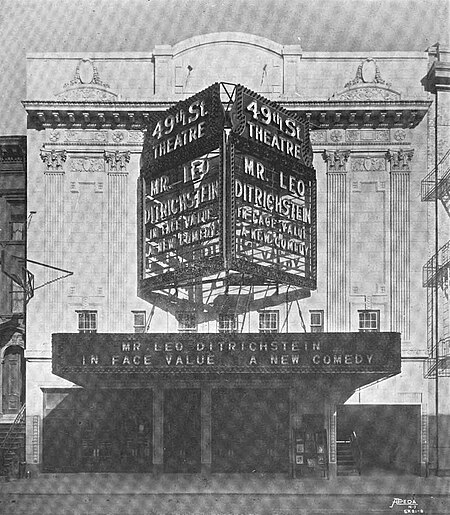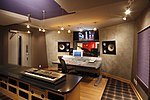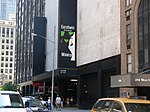49th Street Theatre

The 49th Street Theatre (later renamed Cinema 49) was a Broadway theater at 235 West 49th Street in the Theater District of Manhattan in New York City. The 750-seat neo-Renaissance style theater was designed by the architect Herbert J. Krapp for the Shubert Organization. It opened on December 26, 1921, with a performance of Face Value, a comedy by Laurence Grass. Although it had some popular productions, such as the revue La Chauve-Souris and the Aaron Hoffman play Give and Take, the venue was one of the Shuberts' less successful locations. They lost control of the property during the Great Depression. It continued to operate as a playhouse until April 1938. The final theatrical performance at the venue was a production of Henrik Ibsen's The Wild Duck. The venue was then converted to show movies and reopened as Cinema 49. The cinema was also unsuccessful and closed in 1940; the building was demolished in December of that year.
Excerpt from the Wikipedia article 49th Street Theatre (License: CC BY-SA 3.0, Authors, Images).49th Street Theatre
West 49th Street, New York Manhattan
Geographical coordinates (GPS) Address Nearby Places Show on map
Geographical coordinates (GPS)
| Latitude | Longitude |
|---|---|
| N 40.761577 ° | E -73.985577 ° |
Address
West 49th Street 239
10019 New York, Manhattan
New York, United States
Open on Google Maps










